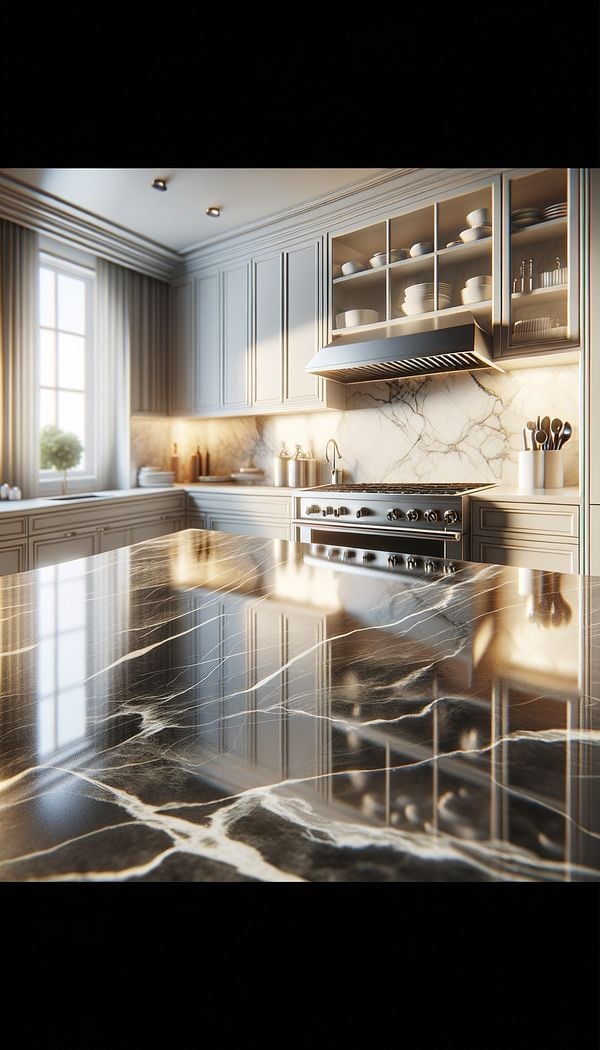What is Marble?
Marble is a timeless, elegant natural stone often used in interior design.
Description
Marble, a metamorphic rock that forms when limestone is subjected to high heat and pressure, boasts a stunning array of patterns and colors, making it a favorite among interior designers and homeowners alike. Its unique veining and glossy finish lend an air of sophistication and luxury to any space. While traditionally associated with classical and opulent design styles, marble is versatile enough to fit seamlessly into modern and minimalist interiors as well. This adaptability, combined with its natural beauty, makes marble a sought-after material for countertops, flooring, wall treatments, and decorative accents. However, marble requires care to maintain its appearance, as it is porous and can be susceptible to staining, etching, and scratching if not properly sealed and maintained.
Usage
Marble is primarily used in high-end kitchen and bathroom designs, often seen in countertops, backsplashes, and flooring. It is also popular in creating statement pieces such as marble tables, lamps, and vases. In architectural elements, marble can be used in facades, staircases, and fireplace surrounds, offering both durability and elegance.
FAQs
-
Can marble be used in outdoor spaces?
Yes, marble can be used in outdoor spaces, but it requires sealing and regular maintenance to withstand weather conditions and minimize wear.
-
How do you maintain marble surfaces?
Marble surfaces should be cleaned with a gentle, non-abrasive cleaner and sealed regularly to protect against stains and etching. Avoid acidic substances, which can damage the stone's surface.
-
Is marble more expensive than other natural stones?
Marble is often more expensive than some other natural stones due to its aesthetic appeal and the complex process required to quarry and finish the material. Prices can vary depending on the type and quality of the marble.
Practical Application
To incorporate marble into interior design, consider using it in areas where its beauty can be showcased, such as kitchen countertops or bathroom vanities. Due to its susceptibility to wear, it's advisable to use marble in lower-traffic areas or where its exposure to potentially damaging substances is minimized. Always ensure marble is properly sealed and use protective mats or coasters to help preserve its surface.
-
Architectural Elements199 articles
-
Design Styles478 articles
-
Materials & Textiles360 articles
-
Flooring & Carpets48 articles
-
Wall Treatments & Finishes157 articles
-
ToneTone refers to the lightness or darkness of a color.
-
French RenaissanceFrench Renaissance refers to a period of rebirth in French art and architecture, emulating classical forms with a focus on symmetry and proportion.
-
PressboardPressboard is a type of engineered wood product made from wood fibers bonded together under heat and pressure.
-
Unfinished FurnitureUnfinished furniture is furniture that has been constructed but has not had its final finish applied.
-
AlignmentAlignment in interior design refers to the arrangement of elements in a way that creates a line or row, forming a visual connection.
